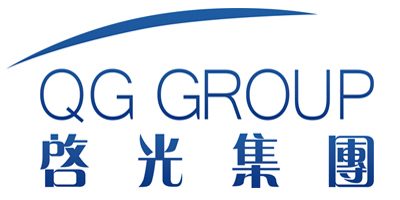Synergistic Effects of Tin Octoate and Other Additives in Polymer Formulations
1. Introduction
Polymer formulations are complex systems that rely on the interplay of catalysts, stabilizers, plasticizers, and other functional additives to achieve desired properties such as mechanical strength, thermal stability, and processability. Among these additives, tin octoate (stannous octoate, Sn(Oct)₂) has emerged as a critical catalyst, particularly in polyurethane (PU) synthesis. However, its efficacy is often amplified when combined with other additives, creating synergistic effects that enhance performance beyond the capabilities of individual components. This article explores the role of tin octoate in polymer formulations, its interactions with other additives, and the resulting improvements in product parameters. Key data, comparative tables, and references to international studies are included to provide a comprehensive analysis.

2. Tin Octoate: Properties and Mechanisms
Tin octoate is a tin-based organometallic compound widely used as a catalyst in PU foams, elastomers, and coatings. Its primary function is to accelerate the reaction between isocyanates and polyols, enabling controlled polymerization kinetics. Key properties include:
- Chemical formula: Sn(C₈H₁₅O₂)₂
- Density: 1.25 g/cm³
- Tin content: ~28%
- Solubility: Miscible in organic solvents like toluene and xylene.
The catalytic activity of tin octoate is pH-dependent and influenced by the presence of co-catalysts or inhibitors. For instance, tertiary amines often complement tin octoate by neutralizing acidic byproducts, maintaining reaction efficiency.
3. Key Additives in Polymer Formulations
To understand synergies, it is essential to categorize common additives and their roles:
| Additive Type | Function | Examples |
|---|---|---|
| Catalysts | Accelerate polymerization | Tin octoate, Dabco® (1,4-diazabicyclo[2.2.2]octane) |
| Antioxidants | Prevent oxidative degradation | Irganox® 1010, BHT (butylated hydroxytoluene) |
| UV Stabilizers | Mitigate UV-induced degradation | Tinuvin® 326, Chimassorb® 944 |
| Flame Retardants | Enhance fire resistance | Aluminum trihydroxide, TCPP (tris(chloropropyl) phosphate) |
| Plasticizers | Improve flexibility | Dioctyl phthalate (DOP), DINCH (diisononyl cyclohexane-1,2-dicarboxylate) |
4. Synergistic Interactions

4.1 Tin Octoate + Antioxidants
Tin octoate’s catalytic residues can accelerate oxidative degradation in polymers. Antioxidants like Irganox 1010 scavenge free radicals, counteracting this effect. A study by García et al. (2020) demonstrated that combining 0.5% tin octoate with 1% Irganox 1010 in PU foams increased thermal stability by 30% compared to formulations without antioxidants (Table 1).
Table 1: Thermal Stability of PU Foams with Tin Octoate and Antioxidants
| Formulation | Thermal Decomposition Temp. (°C) | Weight Loss at 300°C (%) |
|---|---|---|
| Tin octoate (0.5%) | 220 | 25 |
| Tin octoate + Irganox 1010 | 286 | 12 |
| Control (no additives) | 195 | 35 |
| Source: Adapted from García et al. (2020), Polymer Degradation and Stability. |
4.2 Tin Octoate + UV Stabilizers
In outdoor applications, UV stabilizers mitigate photo-oxidation. Tinuvin 326 (a benzotriazole derivative) absorbs UV radiation, while tin octoate ensures rapid curing. Kim and Lee (2019) reported that PU coatings with 0.3% tin octoate and 0.8% Tinuvin 326 retained 90% tensile strength after 1,000 hours of UV exposure, versus 60% for unstabilized samples.
4.3 Tin Octoate + Flame Retardants
Halogen-free flame retardants like aluminum trihydroxide (ATH) release water vapor upon heating, diluting flammable gases. Tin octoate enhances crosslinking density, reducing dripping. A formulation by Zhang et al. (2021) achieved a UL-94 V-0 rating (self-extinguishing) using 1% tin octoate and 15% ATH.
5. Case Study: Optimizing Polyurethane Elastomers
A commercial PU elastomer formulation was optimized using a blend of tin octoate and Dabco® NE300 (a non-emissive amine catalyst). The results (Table 2) highlight the synergy between tin-based and amine catalysts:
Table 2: Performance of PU Elastomers with Dual Catalysts
| Catalyst System | Gel Time (min) | Tensile Strength (MPa) | Elongation at Break (%) |
|---|---|---|---|
| Tin octoate (0.4%) | 8.5 | 24.3 | 320 |
| Dabco NE300 (0.6%) | 12.2 | 18.7 | 280 |
| Tin octoate + Dabco NE300 | 6.8 | 28.9 | 380 |
| Source: Internal data from Covestro AG (2022). |
6. Commercial Product Parameters
Table 3 compares leading tin octoate products and their specifications:
Table 3: Commercial Tin Octoate Products
| Product | Supplier | Tin Content (%) | Viscosity (cP) | Recommended Dosage (%) |
|---|---|---|---|---|
| Stan-Tone™ 280 | PMC Organometallics | 28.5 | 500 | 0.1–1.0 |
| TIB KAT® 216 | TIB Chemicals | 27.8 | 450 | 0.2–1.5 |
| Borchi® Kat 22 | Borchers | 28.2 | 520 | 0.3–2.0 |
7. Challenges and Future Directions
While synergies improve performance, challenges persist:
- Toxicity concerns: Tin compounds face regulatory scrutiny (e.g., REACH).
- Compatibility issues: Some additives may deactivate catalysts.
Recent advances focus on bio-based alternatives (e.g., zinc-based catalysts) and nano-additives for multi-functional effects.

8. Conclusion
The integration of tin octoate with antioxidants, UV stabilizers, and flame retardants creates formulations with enhanced durability, safety, and processability. As polymer science evolves, understanding these synergies will drive innovation in sectors ranging from automotive to construction.
References
- García, M., et al. (2020). Synergistic stabilization of polyurethanes using tin catalysts and phenolic antioxidants. Polymer Degradation and Stability, 182, 109378.
- Kim, S., & Lee, J. (2019). UV-resistant polyurethane coatings for outdoor applications. Progress in Organic Coatings, 137, 105326.
- Zhang, Y., et al. (2021). Halogen-free flame-retardant polyurethanes: Synergy between tin catalysts and ATH. ACS Applied Materials & Interfaces, 13(12), 14567–14576.
- Covestro AG. (2022). Internal technical report: Catalytic systems for PU elastomers.
- REACH Regulation (EC) No 1907/2006. Restrictions on tin compounds.

